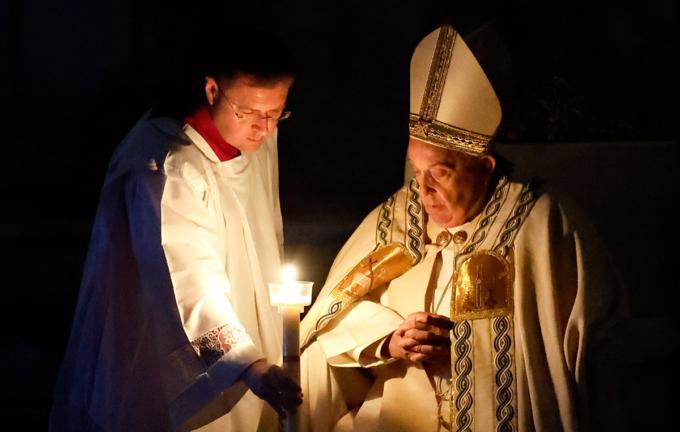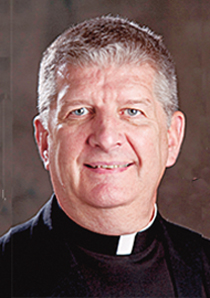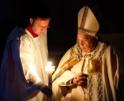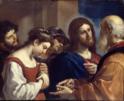
Faith
Probably and correctly thought of as the longest of the church's regularly celebrated liturgies, it is also the most beautiful.

O'Grady
The Lenten season leads us to the celebration of the Paschal Triduum, and the high point of the Triduum and the Church's entire liturgical year and life is the Great Vigil of Easter. Last week, we looked at Holy Thursday and Good Friday. This week, we focus on the Great Vigil.
Probably and correctly thought of as the longest of the Church's regularly celebrated liturgies, it is also the most beautiful. The catechumens who will receive the Easter sacraments -- baptism, confirmation, and Eucharist -- would likely be the ones to tell you about this night. It is both the culmination of their initial journey to the Catholic faith and their entrance into the community of Christ's missionary disciples. It is also when we, who have already been initiated into these sacred and saving mysteries, recall and celebrate our initiation into Christ's life, however many years ago it may have been. Renewing our baptismal promises, we renew our pledge to be models and agents of evangelization.
There are four stations or parts of this liturgy. The church reminds us that the entire Vigil is to be celebrated in darkness and states that this is to be taken in the strictest sense. The power of Christ the Light overcoming darkness is completely lost in blazing sunlight and a light-flooded church.
First is the Service of Light, which takes place outside the church and in total darkness. It includes:
-- The Blessing of the Easter Fire.
-- The Preparation and Lighting of the Easter or Paschal Candle. The candle is to be made of wax and is to be new each year.
-- The Procession with the Candle. The procession allows the light of Christ to enter the church gradually as the candles of the assembly, starting at the entrance of the church, are lit from the Paschal Candle. When the Paschal Candle has been placed in its stand next to the ambo, all the lights of the church are now illuminated.
-- The Easter Proclamation or the Exultet is proclaimed, preferably in its sung version. The proclamation is made from the ambo.
Following is the Liturgy of the Word:
-- Seven readings from the Old Testament and the corresponding responsorial Psalm and prayer after each Reading. The clear preference is for all seven. However, the number may be reduced, keeping the respective psalm and prayer for the chosen readings. This will be the last time that the Old Testament is proclaimed at any liturgy until the Vigil of Pentecost.
-- After the last Old Testament readings, the Glory to God in the Highest is sung.
-- The epistle reading is taken from St. Paul's Letter to the Romans.
-- The triple alleluia with its three verses (there is usually only one verse) is sung, usually led by a cantor with the alleluia sung by the assembly.
-- The Gospel is proclaimed.
-- A brief homily "is not to be omitted."
Then, there is the Liturgy of Baptism:
-- The Blessing of the baptismal font with the Litany of the Saints and the Prayer of Blessing.
-- Baptism following the format provided in the Roman Missal.
-- Confirmation is to be conferred immediately following the baptism of all those who are ages seven and older.
-- Renewal of Baptism Promises with the questions of the whole assembly by the principal celebrant and the sprinkling of the entire assembly with the Easter Water.
-- The Creed is replaced by the Renewal of Promises of Baptism.
-- The Universal Prayer (General Intercessions) are proclaimed. This is unusual because, on other occasions, when the Litany of the Saints or of Supplication is sung, these are omitted.
Finally, there is the Liturgy of the Eucharist. This will look very much like a Sunday Eucharist in the parish:
-- Preface
-- Holy, Holy, Holy, preferably sung
-- Eucharistic Prayer only I, II, or III may be used as there are proper prefaces for Easter. Likewise, there are insertions in each prayer for the newly initiated that the principal celebrant should take care to pray.
-- Memorial Acclamation, preferably sung.
-- Great Amen, preferably sung.
-- The Lord's Prayer and its embolism could appropriately be chanted.
-- The Sign of Peace.
-- The Lamb of God, preferably sung.
-- Holy Communion -- This will, however, be the "First Communion" of the newly baptized. Holy Communion under both kinds, not only for the newly initiated but for the whole assembly, would be appropriate.
-- Post Communion Prayer
-- The Solemn Blessing and the Dismissal are given with the triple alleluia at Masses on Easter Sunday and its Octave and at Masses of Pentecost Sunday.
The Paschal Candle will be lit at all liturgies celebrated in the church throughout the Easter season. It should remain in the position near the ambo and only be moved near the baptismal font after Pentecost.
This Easter will be observed and celebrated on the same day in the Roman Catholic Church, the Eastern Catholic Churches, and most of the Orthodox Churches of the world.
Recent articles in the Faith & Family section
-
'The Chosen' Season Five sets the table for Holy WeekSister Nancy Usselmann
-
The Great VigilFather Robert M. O'Grady
-
ResilientArchbishop Richard G. Henning
-
Learning from the Missions: Commitment to God's Plan Must be TotalMaureen Crowley Heil
-
Something newScott Hahn























